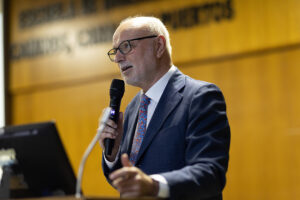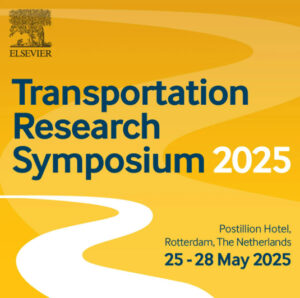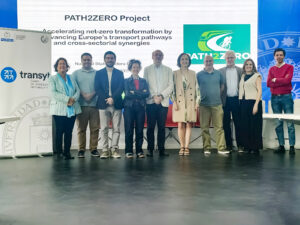UPM researchers propose the creation of pedestrian corridors similar to ecological ones that could favor the mobility on foot of citizens and reduce pollution and traffic in cities.
Have you ever wondered how long it takes when you choose to walk to a place due to factors such as traffic lights, zebra crossings or certain architectural barriers? A team of researchers from the Polytechnic University of Madrid (UPM) has developed a study that uses the analysis of Geographic Information Systems (GIS) to promote pedestrian mobility in cities.
"The new urban configurations have given prominence to motorized mobility by fragmenting the mobility of pedestrians," explain the authors, researchers from the Higher Technical School of Forestry, Forestry and Natural Environment Engineering of the UPM and who are also part of TRANSyT, the Transport Research Center of this university.
"In their daily journeys, people face a series of barriers, such as traffic lights and zebra crossings, which delay their movements, which can mean significant delays in the total calculation of the trip," they add.
 Walking within cities is a fundamental piece to maintain the social cohesion and sustainability of cities. Therefore, in recent years pedestrian mobility has begun to be taken into account in the planning of new urban configurations. However, there are still many barriers that must be eliminated until pedestrians can move more smoothly through the streets. Designing a useful methodology to identify priority pedestrian corridors and evaluate the effects that new urban configurations that give priority to pedestrian mobility would have, at least in certain areas, is the objective of the study in which UPM researchers have participated.
Walking within cities is a fundamental piece to maintain the social cohesion and sustainability of cities. Therefore, in recent years pedestrian mobility has begun to be taken into account in the planning of new urban configurations. However, there are still many barriers that must be eliminated until pedestrians can move more smoothly through the streets. Designing a useful methodology to identify priority pedestrian corridors and evaluate the effects that new urban configurations that give priority to pedestrian mobility would have, at least in certain areas, is the objective of the study in which UPM researchers have participated.
As part of their work, the experts developed a method that integrates network analysis with GIS and the use of Kernel densities (commonly used to designate ecological corridors). The methodology was applied in Vitoria-Gasteiz, a city that in recent years has made a significant effort in recent years to support and promote sustainable modes of transport.
Through the study of real displacements obtained from a mobility survey, it was found that the existence of pedestrian barriers meant an overall increase in travel times on foot of around 12%. With these data, the streets with the highest pedestrian flows were analyzed and a series of corridors were proposed using methodologies developed in ecology. The displacements of pedestrians with the new urban configuration were evaluated and as a result it was seen that the implementation of these corridors could reduce these percentages by 4-5%.
"Our research allowed us to verify that modifying only 1.5% of the urban road network that pedestrian corridors would occupy, it could be possible to achieve around a 6-7% improvement in travel times, something very significant"," explain the authors.
For the UPM researchers, the importance of this work lies in the simplicity when applying the proposed methodology, in that it can be transferred to any city and in the fact that it not only provides an improvement in the travel times of walking trips, but its use could also translate into a global increase in pedestrian mobility in cities, with the reduction of traffic jams and pollution that this would entail. The authors have published an article that includes the results of this work in the journal Sustainability.
Delso, J.; Martin, B.; Ortega, E.; Otero .; I. A Model for Assessing Pedestrian Corridors. Application to Vitoria-Gasteiz City (Spain). Sustainability, 2017, 9(3), 434.
Source: www.upm.es






